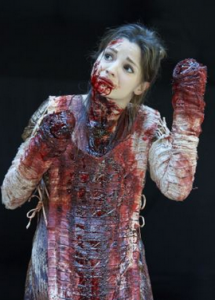While perusing my late uncle’s poetry collection Anniversary Songs, I read the words that comforted him during his final years, words that he wrote, no less. While many of James Wronoski’s poems are written for his wife in an attempt to eternalize his love for her, the poet directly addresses his cancer in others. Sometimes, he even addresses them both.
I’ve recognized this in other works, that the words I’m reading are a way of coping with some sort of ailment, be it physical or emotional. I’ve found it in poetry, memoir, and even fiction. The writers’ words heal. There’s an intimacy in allowing others—strangers—to read these emotionally charged words, and it moves me every time.
Catharsis: “The purification of emotions by vicarious experience, esp. through drama.” Aristotle originally used this word in his work on dramatic theory titled Poetics. He used catharsis as a metaphor for how tragedy affects the spectator. Works by various authors, poets, and playwrights succeed in evoking sympathy in the reader or viewer. Perhaps this explains why books—be it fiction or non—poems, plays, and arguably most often movies, can bring tears to audience members’ eyes. By experiencing fear, sorrow, and pain, the readers or viewers can purge these excessive emotionsand are cleansed.
 But what about the writer? What readers possess is the work in its finished stage. They don’t see it from proposal to publication like the writer does. They don’t have access to the drafts, rewrites, edits, and scraps. But that process is as important to the writer as the final product.
But what about the writer? What readers possess is the work in its finished stage. They don’t see it from proposal to publication like the writer does. They don’t have access to the drafts, rewrites, edits, and scraps. But that process is as important to the writer as the final product.
Mimesis: “Imitation; spec. the representation or imitation of the real world in (a work of) art, literature, etc.” Writers often recreate their past experiences through words. They don’t simply purge their emotions, but rather, they acknowledge them. Bringing these events back to life allows some writers to cope.
In the late 1800s, psychoanalyst Josef Breuer developed a psychological treatment for individuals who suffer from hysteria. Breuer’s patients, while under hypnosis, recalled traumatic experiences to evoke emotions that may have been suppressed or forgotten after the trauma. By doing so, the patients noticed their hysteric symptoms dissipated. And I’m under the impression that authors accomplish this completely consciously, intentionally, successfully, and throughout each and every stage of the writing process.
While Aristotle considers how tragedy affects the spectator, he does not address how, or if, tragedy affects the performer. I have found, while reading memoirs, poetry collections, and even novels, that writers often write for both themselves and their reader, and it is worth considering this relationship, especially when the writer invites the reader into a private and personal experience.
Reading Autobiography, a guide written by Sidonie Smith and Julia Watson, references “scriptotherapy,” a term coined by Suzette Henke in her book Shattered Subjects. Smith and Watson define this word as a response “to signify the process of speaking or writing about trauma in order to find words to give voice to previously repressed memories.” They identify it as an important method to consider when interpreting autobiographical texts, explicitly or not.
Last spring for Shenandoah I recommended Natalie Diaz’s When My Brother Was an Aztec. In the post, I discuss how Diaz’s poetry is admittedly autobiographical, and the reader can infer from her jarring, if not graphic, entries that writing this coll ection provided a means of coping for Diaz. This is not to say her writing cured her of her post-colonial traumatic stress, but it at least remedied some wounds.
ection provided a means of coping for Diaz. This is not to say her writing cured her of her post-colonial traumatic stress, but it at least remedied some wounds.
Likewise, I believe my uncle’s poetry accomplished a similar goal. He wrote in the late stages of cancer and his poems allowed him to confront his disease head-on. One of his poems in particular addresses his cancer directly.
By acknowledging their respective ailments—one physical, one emotional—both poets are able to use the power of writing for good.
But this mechanism is not exclusive to poets. Memoirists also find comfort in exploiting their troubled pasts. Mary Karr’s The Liars’ Club retells her dysfunctional childhood with an alcoholic, and sometimes pyromaniac, mother and an occasionally absent father.
It even applies to fiction. Marilynne Robinson’s epistolary novel Gilead features a dying narrator, Reverend John Ames, who writes letters to his young son. Rev. Ames laments that his son will grow up fatherless, and he attempts to quell this regret through these letters. He writes with the intention of creating a legacy for his son—an all-inclusive genealogy and stories about his own father—but ends up providing himself with closure.
Wronoski, Diaz, Karr, and Robinson’s works were each part of a long and intensive process that no doubt featured countless edits, rewrites, and scraps that each offered another kind of satisfaction. Discovering the perfect details, no matter the form, can itself be cathartic, perhaps even more then the purgative nature of spilling emotions onto a first draft.
 These examples demonstrate why writers write, and even why readers read, why painters paint or musicians compose. The list is unexhausted on both accounts; the medium does not change or dictate the cathartic or mimetic nature of art. Artists can find—via an accumulation of words, of paint, or notes—the perfect confines for their unique experiences.
These examples demonstrate why writers write, and even why readers read, why painters paint or musicians compose. The list is unexhausted on both accounts; the medium does not change or dictate the cathartic or mimetic nature of art. Artists can find—via an accumulation of words, of paint, or notes—the perfect confines for their unique experiences.
*Catharsis and Mimesis as defined by OED.
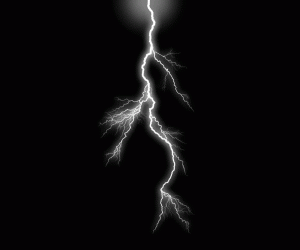 to determine where the book is going. And while I have noticed a lull in the print book vs. e-book debate (I, myself, am sick of it), I think it’s safe to say that we need not assume that “digital” and “future” are synonymous. At least not when it comes to reading. The future of the book comes down to two words: flash fiction.
to determine where the book is going. And while I have noticed a lull in the print book vs. e-book debate (I, myself, am sick of it), I think it’s safe to say that we need not assume that “digital” and “future” are synonymous. At least not when it comes to reading. The future of the book comes down to two words: flash fiction.





 ection provided a means of coping for Diaz. This is not to say her writing cured her of her post-colonial traumatic stress, but it at least remedied some wounds.
ection provided a means of coping for Diaz. This is not to say her writing cured her of her post-colonial traumatic stress, but it at least remedied some wounds. These examples demonstrate why writers write, and even why readers read, why painters paint or musicians compose. The list is unexhausted on both accounts; the medium does not change or dictate the cathartic or mimetic nature of art. Artists can find—via an accumulation of words, of paint, or notes—the perfect confines for their unique experiences.
These examples demonstrate why writers write, and even why readers read, why painters paint or musicians compose. The list is unexhausted on both accounts; the medium does not change or dictate the cathartic or mimetic nature of art. Artists can find—via an accumulation of words, of paint, or notes—the perfect confines for their unique experiences.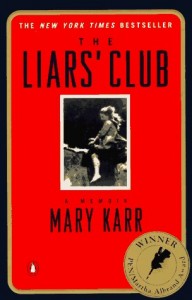
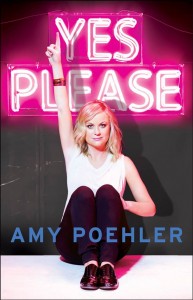
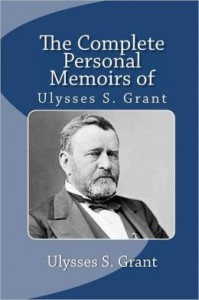


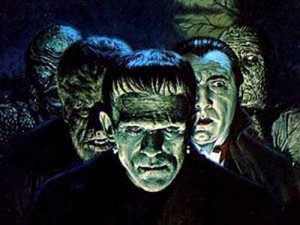



 I’ve been working with the Shenandoah literary magazine for a while now, and next week they launch their noir issue. The editor, Rod Smith, asked me to try and come up with a logo/ad for
I’ve been working with the Shenandoah literary magazine for a while now, and next week they launch their noir issue. The editor, Rod Smith, asked me to try and come up with a logo/ad for 


